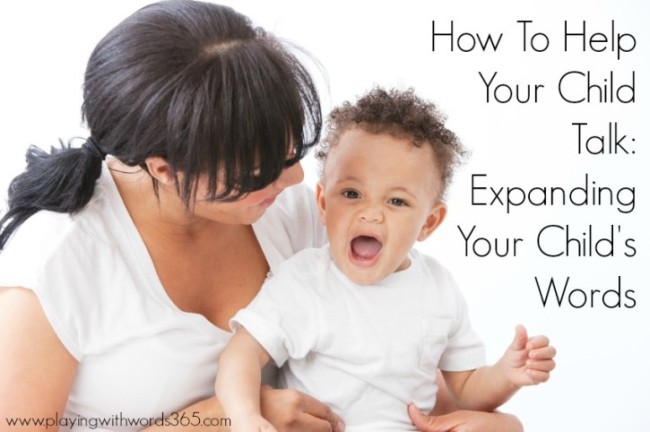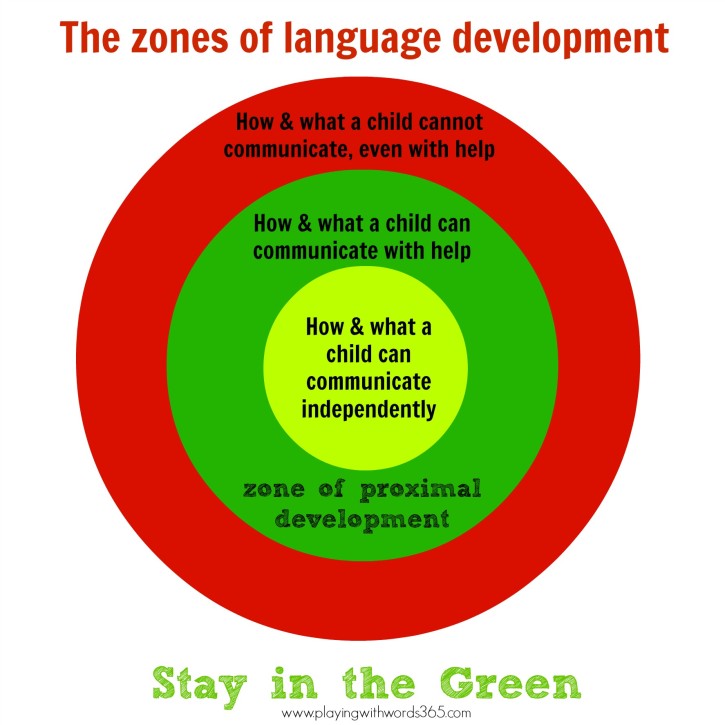Welcome to my How to Help Your Child Talk series. These posts are intended to give you simple tips to help you work with your child so YOU can be your child’s best “speech therapist.†You may want to try out a new tip/strategy for a week or so and then when you feel like you’ve “got it† and it comes more naturally, move on to a new tip and incorporate that into your day for another week or two. For a list of  all my tips, go HERE. This post contains affiliate links to Amazon for your convenience.Â
Today, we are going to talk about a very important tool for helping your child talk, and that is expanding your child’s words. Remember my post about responding meaningfully? This is one of the ways to respond meaningfully to your child! Let’s get started.

What are Expansions?
Expansions are when you take the words your child says about what they see and do and repeat them while adding in missing words/grammar. Another way to look at it, is repeating back the “child-like†sentences back to your child using more “adult†language. By doing this, you are repeating and expanding your child’s language without directly “correcting†him/her. For example, if your child sees a red block and says “red†you could say “Yes, it’s a red block.†If your child says “Car go!†you would say something like “Yes! The car is going.â€Â It can be helpful to emphasize the “new†language you are providing by saying those words with a higher inflection/tone in your voice and sometimes can you can even repeat those new words a second time. Make sure you speak to your child in grammatically correct sentences as it is important for him to hear language used in the correct manner.
The simple act of repeating your child’s utterances not only confirms to your child that you indeed heard him/her, but also this back-and-forth of repeating let’s your child know that what he/she said was “worth repeating†and therefore can encourage your child to say it yet again (either immediately or later). This provides your child with continuing modeling and practice of language concepts.
Expansions & the ZPD
As I shared recently, the things in the ZPD are the things your child can do with just a little bit of help. This is the area you want to be in when working with your child. Here is the image I created to help give you an idea of the ZPD in relation to language development. You can read the full post for a more detailed description.

Remember, you want to stay in the green. Give your child just a little more information (expanding his words) so he will learn to expand them himself!
How Often Should I Do This?
You’ll want to use this in moderation with your child. This is important so that you…
- …can keep conversations as natural as possible. If you are constantly repeating and extending your child’s words, it can interrupt the flow of conversation.
- …don’t make your child dependent on hearing you repeat him. It is normal for children to want confirmation that you heard/understood them, but repeating and extending too much can cause your child to expect it all the time. My own son (who was a late talker) became used to my repeating and extending that he expected it a LOT. It can be overdone, even by an SLP who knows better ;)Â
How to Help Your Child Talk: The eBook
Have you been enjoying my series on How to Help Your Child Talk? Have you ever thought “I’d love to print this out for reference?” Well..GREAT NEWS! I will be publishing an eBook with all my posts on this topic, plus a little more! This eBook will be available for a small fee…and 100% of the proceeds will be going to a charity very close to my heart. Stay tuned to find out how to get YOUR copy!
Until then, you can check out all my other tips, go HERE.
Looking for more ways to help with your child’s speech and language development? ? I highly recommend these two books: My Toddler Talks: Strategies and Activities to Promote Your Child’s Language Development by fellow SLP and friend Kim Scanlon and It Takes Two To Talk: A Practical Guide For Parents of Children With Language Delays
 from The Hanen Centre.
DISCLAIMER: My tips are for informational purposes only and do NOT replace the interventions of a licensed and certified speech-language pathologist. Please read my full disclaimer and terms of use page for more information.Â
Leave a Reply